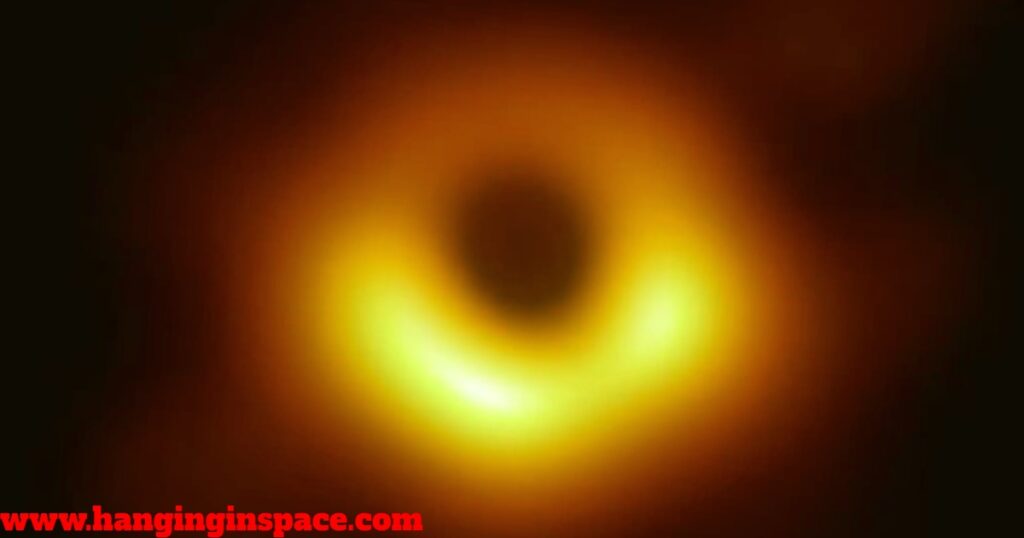Sagittarius A*, also known as Sagittarius A star and frequently shortened to Sgr A*, is a supermassive black hole situated at the heart of the Milky Way, our spiral galaxy.
Astronomers Reinhard Genzel and Andrea Ghez calculated the mass of Sagittarius A* in 2008 and found that it is 4.3 million times larger than the Sun. Just like other black holes, Sagittarius A*’s size is primarily determined by its mass.

The supermassive black hole Sagittarius A* in the Milky Way has an estimated diameter of 14.6 million miles (23.5 million kilometers), according to calculations made by astronomers. In comparison to the Milky Way, which is 1,000 light-years thick and 100,000 light-years broad, this is minuscule.
The material in the accretion disk is orbiting Sagittarius A* at extremely high speeds, reaching millions of kilometers per hour.
All objects in our 13.6 billion-year-old galaxy, including our solar system, circle Sagittarius A*, which is situated 26,000 light-years away.
What is the Structure (Anatomy) of Sagittarius A*?
Event Horizon:
This is the point of no return for anything that ventures too close. The immense gravity of Sagittarius A* causes the spacetime to curve so much that light itself cannot escape beyond this point. The event horizon of Sagittarius A* is estimated to be about 14.5 million kilometers (9 million miles) in diameter, roughly 27 times larger than the diameter of our Sun.
Accretion Disk:
A swirling disk of hot gas and dust surrounds Sagittarius A*. This disk is formed as dust and gas from the surrounding area get pulled in by the black hole’s gravity. As the material spirals inwards toward the black hole, it gets heated to millions of degrees, emitting intense radiation across various wavelengths.
The size of the accretion disk is estimated to be a few light-days across, which is much larger than our solar system.
Singularity:
Matter is crushed to an infinite density in the core of a Sagittarius A*black hole. The final destination of anything that falls on the event horizon is singularity.
When and Who Discovered Sagittarius A*:
The First Hints (1960-1970):
Observations of stars orbiting an invisible object provided the first indications of the existence of a supermassive black hole at the center of the Milky Way. Astronomers observed a cluster of stars close to the galactic center traveling at extraordinarily fast speeds in the 1960s and 1970s.
The known stars’ or stellar clusters’ gravitational pull could not account for these velocities. The existence of a huge object with a strong gravitational pull was the only possible explanation.
Radio Waves Investigation (1980-1990):
Astronomers concentrated on radio waves coming from the galactic core during the ensuing decades. A disk of dust and hot gas is whirling around Sagittarius A*. This material warms up and emits powerful radio waves as it approaches the black hole. Astronomers could indirectly investigate the characteristics of the invisible object at the center by examining these radio waves.
The breakthrough arrived in the 1990s with the development of Very Long Baseline Interferometry (VLBI). This technique combines radio telescopes from around the world, creating a virtual telescope with the effective diameter of the entire Earth.
This enhanced resolution allowed astronomers to map the radio waves emitted from the region around Sagittarius A* with unprecedented detail. The observations revealed a point-like source of radio waves, strongly suggesting the presence of a supermassive black hole.
EHT Collaboration (2000-Present):

By the 2000s, astronomers recognized the need for even higher resolution observations to directly image the supermassive black hole. The Event Horizon Telescope (EHT) collaboration was formed, aiming to combine data from radio telescopes around the world to create a virtual telescope with Earth-sized resolution.
In the 2010s, this project came to fruition with the development of the Event Horizon Telescope (EHT). The Earth-Horn Telescope (EHT) is a global partnership that serves as a single, earth-sized telescope by connecting radio telescopes all around the world.
The black hole at the heart of the Messier 87 galaxy was the subject of the first-ever photograph taken by the Extremely High Telescope (EHT) in 2019. This accomplishment seemed unattainable.
New Era of Exploration (2022-Present):
In 2022, following years of processing and research, the first-ever image of Sagittarius A* was revealed by the Event Horizon Telescope cooperation.
The final proof of a supermassive black hole at the center of our galaxy was given by this remarkable, although hazy, photograph. Its mass and size, estimated to be 4 million times that of our Sun, were measured by astronomers.
Sagittarius A*’s image adds a fresh layer of complexity to our knowledge of this mysterious entity. We should be able to solve more of its riddles as science and technology progress.
Understanding the physics of gravity and the harsh surroundings of black holes can be gained by examining the behavior of stuff whirling around the black hole. Sagittarius A*’s comparison to Messier 87‘s black hole also sheds light on the diversity of these amazing objects.
The effort to comprehend Sagittarius A* is evidence of human curiosity and our never-ending capacity to delve into the secrets of the universe.
Conclusion:
Sagittarius A* is a fascinating giant. Investigating its mysteries will deepen our understanding of black holes, galactic evolution, and the extreme physics at play in the universe‘s densest environments.
